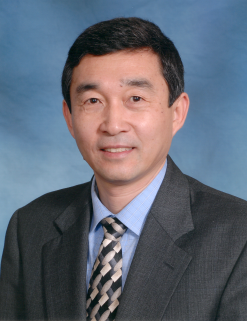发布开云手机在线登陆入口-开云(中国):2019-05-24
讲座开云手机在线登陆入口-开云(中国):2019年5月27日(周一)9:30-11:30
讲座地点:25楼A座3层B教室
主讲人:Professor Heng Wei

主讲人简介:Dr.Heng Wei has extensive research expertise and industrial experience in intelligent transportation systems (ITS), Connected and Automated Vehicle (CAV) impacts, infrastructure-CAV nexus in traffic signal system design, and artificial intelligent (AI)-based Informatics and geographic information system (GIS) in smart-city-oriented travel demand and environmental analytics techniques. He has secured a great number of research projects from ODOT, FHWA, NSF, US EPA, USDOT UTCs, and UC URC/FDC. His research has resulted in over 184 peer-reviewed and referred papers, and nine book or chapters. He has been awarded with many professional prizes and honors. He has served as a member of numerous outstanding professional committees, such as TRB Committee on Artificial Intelligence and Advanced Computing Applications (ABJ70), User Information Systems (AND 20), Transportation in Developing Countries (ABE90), and ASCE T&DI Committees on i) Advanced Technology and Transportation Safety, ii) Sustainability and Environment; and iii) CAV Impacts. He is the Chair of IEEE ITSS Travel Information and Traffic Management Committee, Chair of Energy and Environment Committee under Urban Planning category for the World Transportation Convention (WTC), and Past President of Chinese Overseas Transportation Association (COTA). Dr. Heng Wei invented a video-capture-based method for extracting vehicle trajectory data on multiple lanes from video and developed a software tool, VEVID which was later combined with image processing technique into the a “hybrid” system (VIEW-TRAFIC) to make the video-based traffic extraction suitable for all traffic conditions. He has developed two GIS-based analysis systems, Traffic Air Environmental Health Impact Analysis (TAEHIA) and Air Impact Relating Scenario-based Urban Settings and Transportation Assets In Network (AIR-SUSTAIN) to facilitate analysis of the land-social-travel-environment nexus. Recently,Dr. Wei has created a model and algorithm that uses data from connected vehicles to adjust the timing of traffic lights for maximizing throughput, while formulating theinfrastructure-CAV nexus.
魏恒教授现任美国辛辛那提大学土木工程与施工管理学系交通工程与系统专业教授、博士导师、先导交通工程与系统研究室主任。在智能交通系统(ITS)、联网和自主车辆(CAV)影响、交通信号系统设计中的基础设施CAV连接以及基于人工智能(AI)的智慧城市旅游需求和环境分析技术中的信息学和地理信息系统(GIS)方面,拥有丰富的科研经验与行业经验。
魏恒教授从美国联邦公路局、美国自然科学基金会、美国环保署等获得了大量的研究项目,发表184篇学术论文,9本专著及章节。他曾担任过许多杰出专业委员会的成员,如TRB人工智能和高级计算应用委员会、用户信息系统委员会、发展中国家交通委员会等。他还是IEEE ITSS旅游信息与交通管理委员会主席,世界运输公约(WTC)城市规划类能源与环境委员会主席,海外华人交通协会(COTA)前任会长。
魏恒教授发明了一种基于视频捕获,从视频中提取多车道上车辆轨迹数据的方法,并开发了一个软件工具Vevid,该软件工具后来与图像处理技术结合到一个“混合”系统(VIEW-TRAFIC)中,使基于视频的交通提取适用于所有交通状况。他还开发了两个基于地理信息系统的分析系统,以便于分析陆地-社会-旅游-环境的关系。
最近,魏教授创建了一个包含模型和算法的综合机制,该模型和算法利用CAV的数据,来调整信号灯开云手机在线登陆入口-开云(中国),以最大限度地提高吞吐量,同时制定基础设施CAV连接。
讲座内容:The vehicle-to-vehicle and vehicle-to-infrastructure communication technologies make the CAVs a floating-vehicle sensing data source that can be received ubiquitously in roadways through roadside equipment or Internet-of-Things technologies. This advancement makes it possible to resolve the challenges being faced off with adaptive signal control depending on the traditional loop or video based detection technologies, which cannot directly detect and measure the vehicle trajectory and identify traffic states. Data collected from the CAVs can be used to capture a much more complete picture of the traffic states, which can be utilized for effectively implementing the adaptive signal control. However, it is an imperative need of a synthetic mechanism with modeling algorithms that enables the real-time data exchange among vehicles and between vehicles and infrastructure to formulate the “brain intelligence” of implementing the adaptive control schemes. More significantly, the CAV’s capability of serving as the mobile trajectory sensors could help us to reduce the dependencies on conventional infrastructure-based vehicle detectors. The preliminary research resulting from the simulation evaluation of the developed synthetic models shows that the average control delay per vehicle reduced by 51% whereas throughput improved by around 29% when we implemented the optimization strategy at an isolated intersection. The results initially prove the developed concepts and modules and provide a solid foundation to deeply investigate how the adaptive signal control algorithms proposed in this research can improve the performance along an entire corridor.
车辆与车辆通信、车辆与设施通信技术的发展,使得联网和自主车辆(Connected and Autonomous Vehicles, CAV)成为了一个移动的车辆传感数据源,可以通过路边设备或物联网技术,在道路上接收车辆信息。这一进步可以解决目前基于传统环形检测器或基于视频的检测技术的自适应信号控制所面临的挑战,因为传统环形检测器或视频检测技术无法直接检测车辆的轨迹并识别交通状态。从CAV采集的数据可以用来获取更完整的交通状态,从而有效地实现自适应信号控制。然而,目前迫切需要一种包含模型和算法的综合机制,能充分利用车辆之间、车辆与基础设施之间的实时数据交换,使这一机制成为实现自适应控制方案的“大脑智能”。更重要的是,CAV作为移动轨迹传感器的能力可以帮助我们减少对传统基础设施进行轨迹检测的依赖。对所开发的综合模型进行仿真评估后表明,在单个交叉口实施优化策略时,每辆车的平均控制延误减少了51%,而吞吐量提高了约29%。结果初步证明了所开发的概念和模块,为深入研究自适应信号控制算法改善整个走廊的性能提供了坚实的基础。